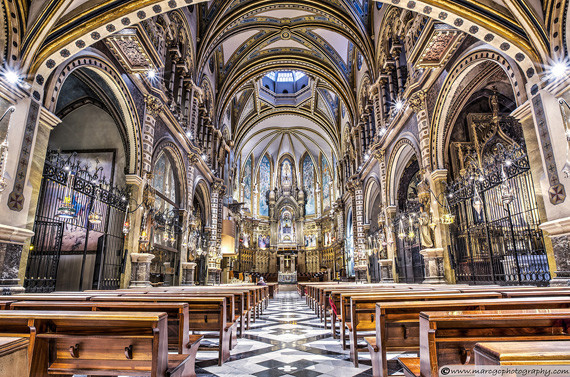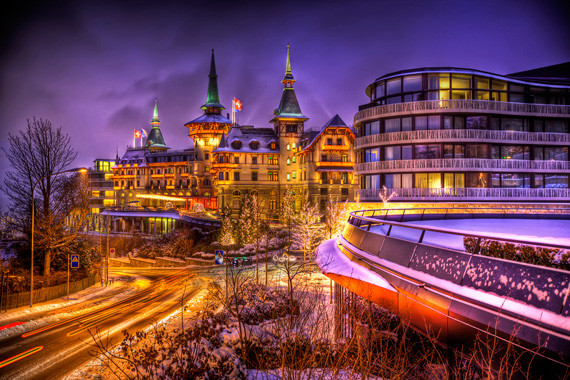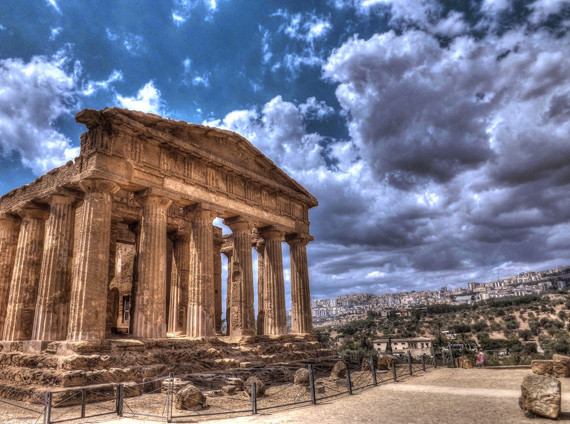Photography, which was once a passion of people, is now a full time profession of many. To help professionals bring out the best effect, several new technologies have been introduced in this field. With modern cameras and advanced equipment, photographers can now capture every angle with complete perfection.
One of the latest technologies, which have taken photography to new heights, is high dynamic range or HDR photography.

Photo by Marc Garrido Clotet.
What is High Dynamic Range or HDR Photography?
Before proceeding to HDR, it will be ideal to recapitulate dynamic range in a line. Dynamic range refers to the difference between darkest and lightest color value of a photograph or the photo contrast. High dynamic range is a technical jargon used in the field of photography to denote the photographs, which have the maximum dynamic range.
HDR images have more dynamic range compared to the ordinary digital cameras and produces high quality photographs.
HDR photography is a somewhat new concept and many of you may not have a clear idea about it. You need to know that HDR photographs are not unnecessarily colorful or unrealistically artistic. The purpose of using this technology is to increase the dynamic range, produce clear photographs by overcoming the restrictions of ordinary camera features. With this technique, one can compile three or more photographs snapped at different exposures and create a beautiful final product.

Photo by Richi Grafik.
Advantages of High Dynamic Range or HDR Photography
Nowadays, HDR photography has become a popular choice. If you are new to the field of photography, glancing through the advantages of HDR photography is worth it.
- With HDR technology, photographers can compile different photographs taken at variable exposures. Not only that but also this technique allows photographers create images with an excellent light detail, which is not possible in single shot taken by ordinary cameras. By using HDR cameras, photographers can capture excellent still photographs, in overexposed as well as underexposed settings. Though photographers have the freedom of adding several effects to the photographs, it is always recommended to keep the image as realistic as possible.
- Photography is an art and someone with best creative skills can flourish in this field. However, to cover up the lack of creative ideas, one can use HDR technology. Though this is not a common practice, at times one can really make some impressive art by using this technology. Yet, to capture the perfect angle, one should carry a tripod. One also needs to have the right photo editing software for editing the photograph and adding the required special effects.

Photo by Flickr user **ste**.
Where To Learn HDR Photography?
Nowadays, there are several institutions offering professional HDR photography courses. One can enroll in any of the reputed institutions to learn HDR photography in complete details. It is also recommended to attend different photography workshops to increase the knowledge base on this type of photography. Regularly updating yourself about the latest introductions in this field can also be of great help in developing your skills and become an established photographer.
About the Author:
Rhommel Bernardino is the creator and webmaster of PhotographyArticles Network. He is a freelance photographer based in Toronto, Canada and has been shooting weddings, events, portraits, fashion, and glamour for the last five years. He is also organizes photographic events like photo shootouts and occasionally hosts photography workshops in and around Toronto.
Like This Article?
Don't Miss The Next One!
Join over 100,000 photographers of all experience levels who receive our free photography tips and articles to stay current:






Hi Rhommel,
Good to see you with some useful inside of HDR photography. Now that I have worked with HDR images so I could say, it gives a good illumination even with low light. This shows that you can control images even with a difficult light. You can produce different images with the same image.
Even if it has disadvantages, but that can be counterbalanced with its huge advantages.
Cheers
Himadri
WHY aren’t we creating actual 10-bit/channel (or greater) output files? This is 2017, we can actually display REAL (genuine) HDR on large-screen UHD TV sets, and on a few of the very latest computer monitors. There is NO LONGER any reason to squeeze-down our output to 8-bits/channel.
The camera manufacturers _claim_ that their sensors and A-to-D converters will do 12 bits or more per channel. Thus, at least theoretically, we _should_ be able to use a single (carefully exposed) raw-file from a high-end camera as the source. (Perhaps no need to take multiple shots at differing exposure settings.)
Hollywood has been using JPEG2000 (12-bit/channel) for Digital Cinema for a few years now.
WHY aren’t we using 10 or 12-bit per channel output formats for digital photography???
Pretty! This was a really wonderful article. Thank you
for providing this information.
It most certainly is not a “fad” since it’s been around for more than a hundred years. You fuddy duddy traditionalists probably prefer that we still use horse & buggies rather than embrace a new technology. Well technology is moving on and as much as you hate to admit it HDR is here to stay. If it wasn’t then guys like Trey Ratcliff wouldn’t be so popular, would they…or several hundred other well named photographers who specialize in HDR. You traditionalists better get on the bandwagon or you’ll be left behind!
Very bad article indeed! Typical of frenzied new age discovery in our “American Idol” society. To say that HDR photography has many advantages over traditional technique is incredibly naive. Why not just say that buying another persons hardware and software has many advantages over being a genuine artist yourself? It’s nuts!
I’ve been doing HDR for about 40 years. This old guy named Ansel Adams got really good at it. It used to be called the Zone System. It relied on perception and science – especially precise dark room printing. (especially burning, and dodging.) You did it yourself with precise use of your exposure meter, careful negative exposure (using a wide latitude film stock) which was carefully developed in the proper chemistry, at the proper temperature, for the right amount of time, and finally -printing on contrast selected fiber based paper. I’m not a big fan of any HDR image that looks unnatural in color, density, contrast, and especially “reality.” Other than that it’s just another technique to keep handy in your tool bag of skills. I advise the avoidance of fads if you are interested in being a skilled and legitimate photographer.
HDR is currently a raging “fad.”
Wait! I didn’t get to the next paragraph where you insinuate that anyone using such techniques lacks creative ideas? That is to my mind not true and besides, insulting to many.
This reminds me of several things in the past. One is when David and his crowd said that imprssionists couldn’t paint and hence their style. The other is when “real photographers” said they didn’t need features like built-in light meters or autofocus, which are now standard on even the most “professional” of cameras. The trouble is they don’t just say that they don’t need these features in a camera, which is fine, there is always an implication that anyone who does use them is not a good photographer. Putting down other people’s ideas of art seems to be so popular in photography.
In this case, you are accused of not having creative ideas if your creative ideas include HDR techniques. Is tone-mapping also included in the coverup? In other words if I want to bring out the sky detail in a single shot by tone-mapping, is this also showing my lack of creative ideas? In this case, you can’t even argue that the camera captured the world as it is, or as our eyes see it. Our eyes have a much larger dynamic range than film or sensors and we could see both the sky and the land easily.
Judy
Well, I’m going to disagree with Michal. Photography is art and hence I wouldn’t speak of “disadvantages” to any technique we choose to use.
In fact, I object to the comment in the article that “it is always recommended to keep the image as realistic as possible.” Do painters get told to keep their paintings as realistic as possible? I don’t think so!
You may not like a style, and I certainly don’t like some, whether a photographic technique or a painter’s style, but that doesn’t mean someone else shouldn’t do it. It’s my vision that matters. And yours…
Judy
Very one sided and basic article. If the author lists “advantages” how can he not list “disadvantages” or at least “critique”.
The facts are also wrong “One of the latest technologies, which have taken photography to new heights, is high dynamic range or HDR photography”. The concept of HDR dates back to the late XIX century so it’s hardly “latest technology”. That reads more like a “fat fiction” than a real, solid article. Very poor effort.